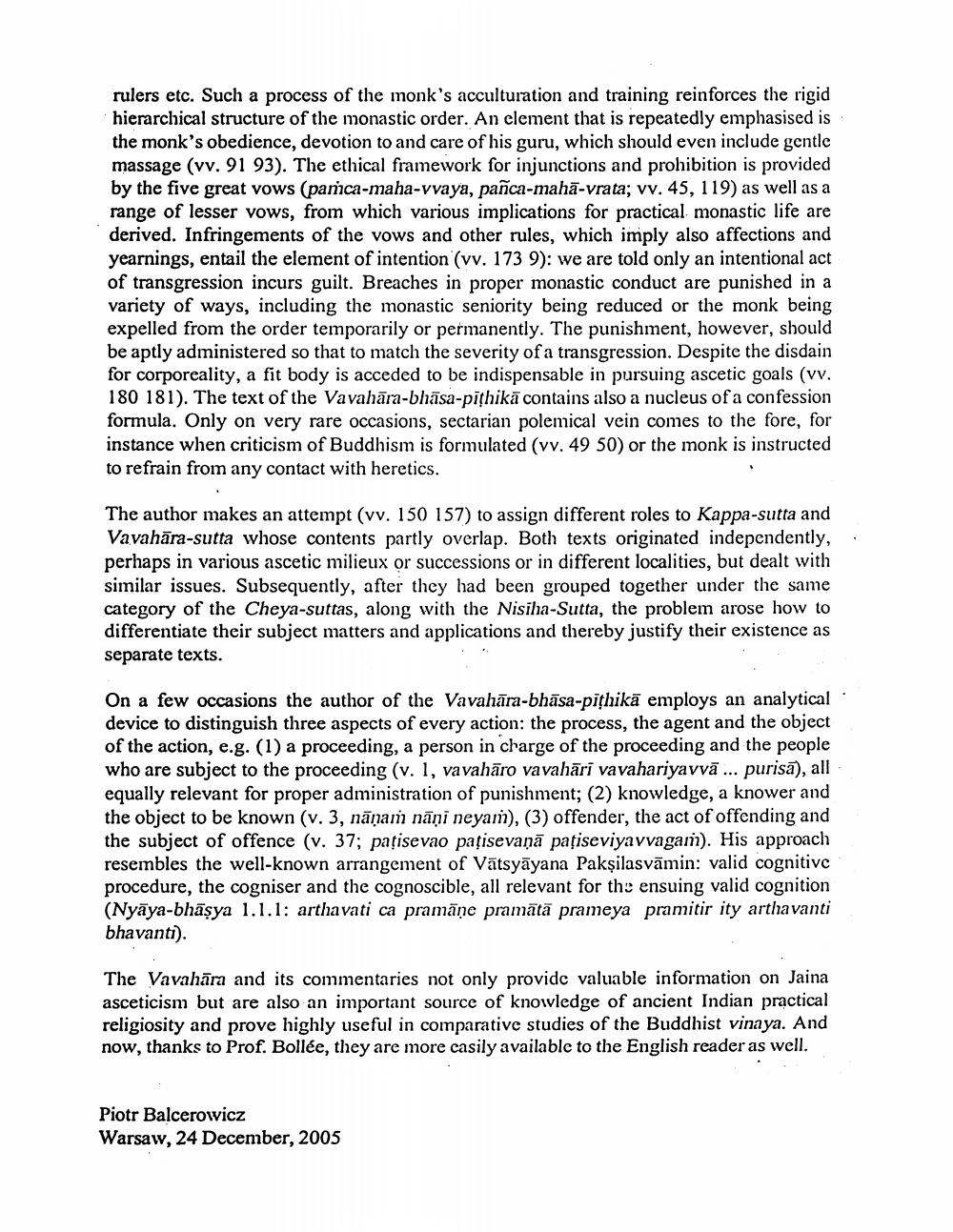________________ rulers etc. Such a process of the inonk's acculturation and training reinforces the rigid hierarchical structure of the monastic order. An element that is repeatedly emphasised is the monk's obedience, devotion to and care of his guru, which should even include gentle massage (vv. 91 93). The ethical framework for injunctions and prohibition is provided by the five great vows (panica-maha-vvaya, panca-maha-vrata; vv. 45, 119) as well as a range of lesser vows, from which various implications for practical monastic life are derived. Infringements of the vows and other rules, which imply also affections and yearnings, entail the element of intention (vv. 173 9): we are told only an intentional act of transgression incurs guilt. Breaches in proper monastic conduct are punished in a variety of ways, including the monastic seniority being reduced or the monk being expelled from the order temporarily or permanently. The punishment, however, should be aptly administered so that to match the severity of a transgression. Despite the disdain for corporeality, a fit body is acceded to be indispensable in pursuing ascetic goals (vv. 180 181). The text of the Vavahara-bhasa-pithika contains also a nucleus of a confession formula. Only on very rare occasions, sectarian polemical vein comes to the fore, for instance when criticism of Buddhism is formulated (vv. 49 50) or the monk is instructed to refrain from any contact with heretics. The author makes an attempt (vv. 150 157) to assign different roles to Kappa-sutta and Vavahara-sutta whose contents partly overlap. Both texts originated independently, perhaps in various ascetic milieux or successions or in different localities, but dealt with similar issues. Subsequently, after they had been grouped together under the same category of the Cheya-suttas, along with the Nisiha-Sutta, the problem arose how to differentiate their subject matters and applications and thereby justify their existence as separate texts. On a few occasions the author of the Vavahara-bhasa-pithika employs an analytical device to distinguish three aspects of every action: the process, the agent and the object of the action, e.g. (1) a proceeding, a person in charge of the proceeding and the people who are subject to the proceeding (v. 1, vavaharo vavahari vavahariyavva ... purisa), all equally relevant for proper administration of punishment; (2) knowledge, a knower and the object to be known (v. 3, nanam nani neyam), (3) offender, the act of offending and the subject of offence (v. 37; patisevao patisevana patiseviyavvagan). His approach resembles the well-known arrangement of Vatsyayana Paksilasvamin: valid cognitive procedure, the cogniser and the cognoscible, all relevant for the ensuing valid cognition (Nyaya-bhasya 1.1.1: arthavati ca pramane pramata prameya pramitir ity arthavanti bhavanti). The Vavahara and its commentaries not only provide valuable information on Jaina asceticism but are also an important source of knowledge of ancient Indian practical religiosity and prove highly useful in comparative studies of the Buddhist vinaya. And now, thanks to Prof. Bollee, they are more casily available to the English reader as well. Piotr Balcerowicz Warsaw, 24 December, 2005




